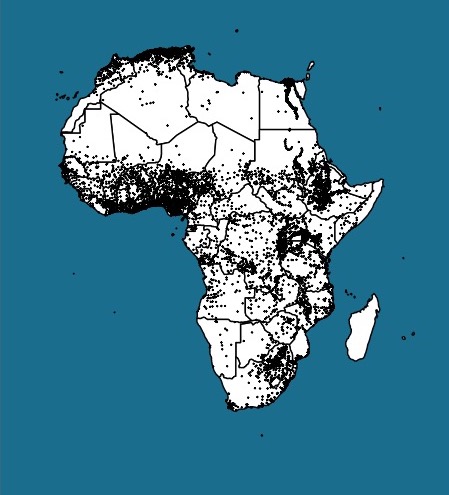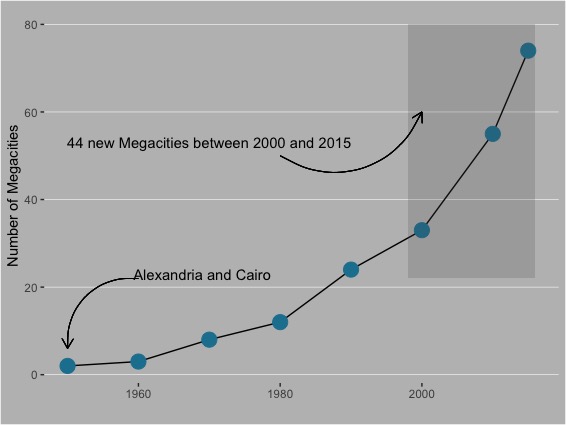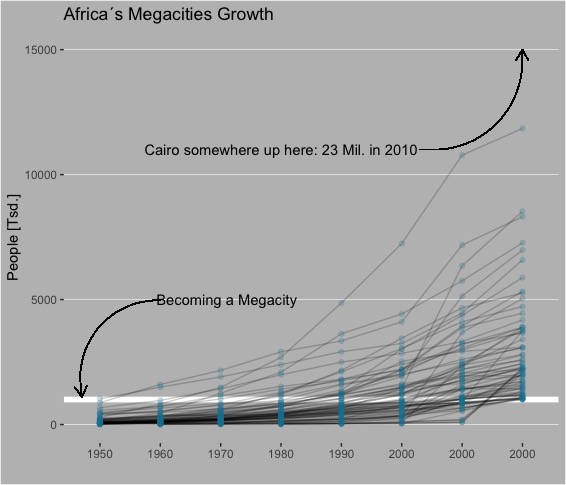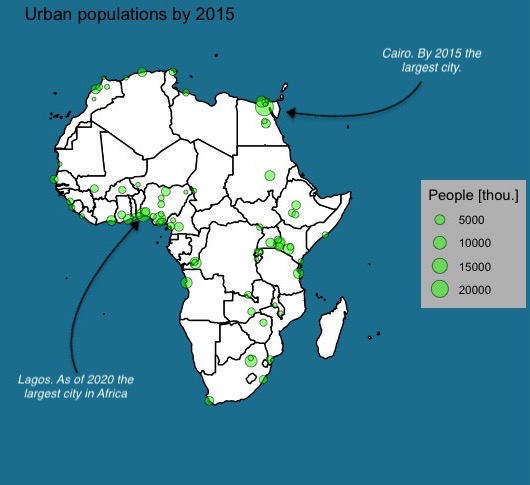Here, an open dataset provided by
Africapolis
is analyzed. It maps urban
agglomerations on the African continent and their population development
from 1950 until 2015. To the right, all of these agglomerations are displayed which are mapped within the dataset, roughly 90000.
A special geographic characteristics to be
recognized is the coastal-heavy distribution of urban spaces. Not only for the sea,
water bodies in general such as the Nile, initially provided best locations
to develop settlement structures. In a similar sense, the
Saharan-conditions or general climate/soil-conditions situated country-inwards reduced chances
of settlement development.
The 93.278 captured urban gatherings within the dataset follow a
'power-law-distribution': few cities with very many inhabitants,
many more with lower population numbers. Here, we focus on those with
more than a million inhabitants which we frame as megacities
(even though the formal definition of a megacity for applies a minimum of ten million people).
By 1950,
only two cities in Africa reached a million citizens: Alexandria and
Cairo. None in sub-Saharan Africa. As time went on, the continent
observed a steep incline in the number of megacities. As by 2015,
we count 74.





